Ready for Pharma’s Next Chapter
Our latest CEO Leadership roundtable focused on the most top-of-mind issues for companies.
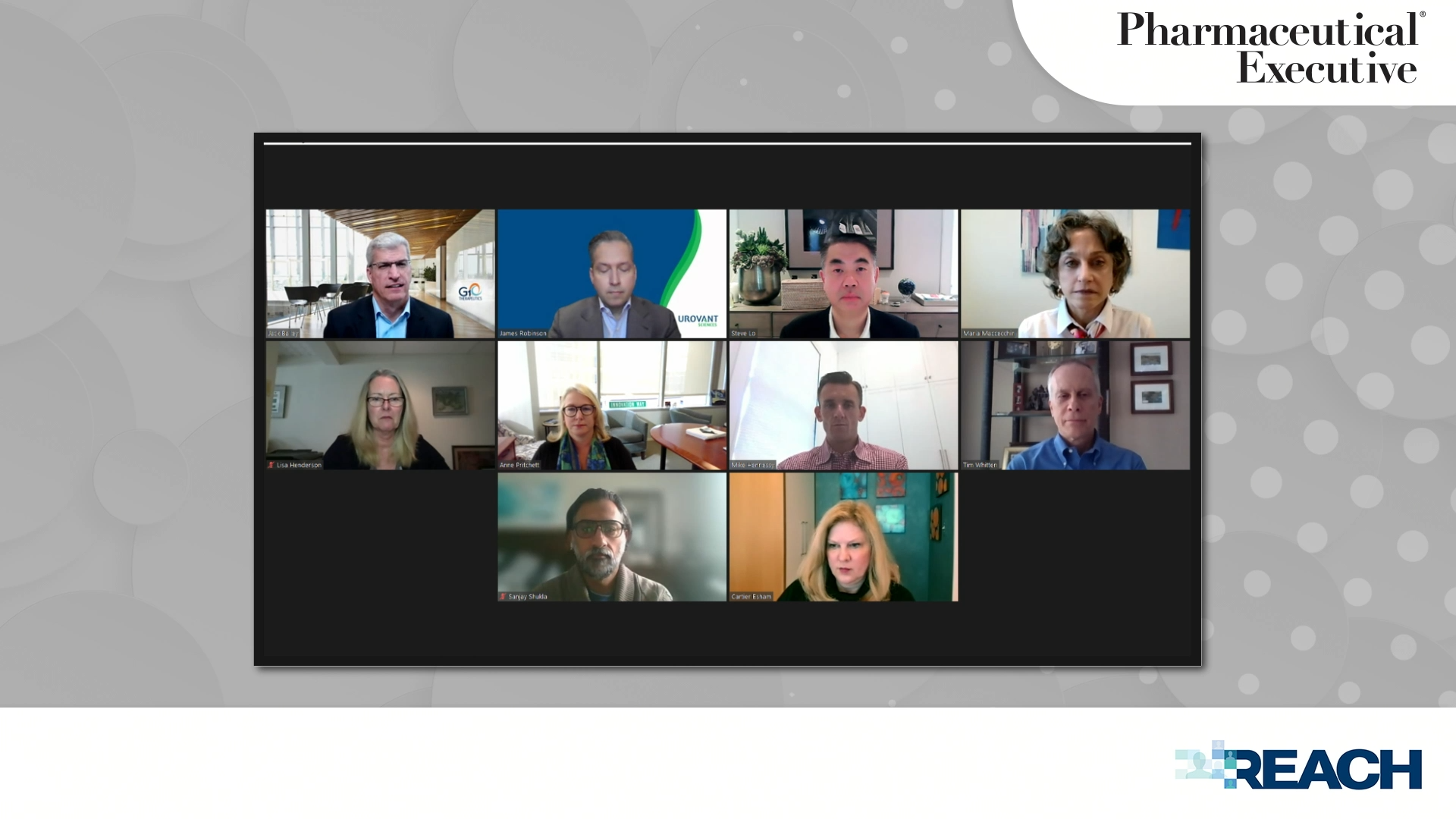
In mid-December 2021, Pharmaceutical Executive convened a diverse group of pharma executives from large and smaller biopharma—both commercial and clinical stage—as well as the industry’s leading policy organizations BIO and PhRMA, to get a holistic view of trends surfacing today that will impact the industry in the next few years. Suffice to say, the past two years were hard to predict, but the panel sought to forecast the enduring trends throughout 2022.
The event was moderated by Michael J. Hennessy Jr., president and CEO of MJH Life Sciences, Pharmaceutical Executive’s parent company.
Following are highlights of the conversation (answers have been edited for length and clarity). View video excerpts from this roundtable on Hybrid Interactions, Supply Chain Issues, Retaining a Changed Workforce and Post-COVID Lessons Learned.

Hennessy: Heading into 2022, we’ve seen everything from supply chain issues, inflation, emerging variants, the latest and greatest Great Resignation, and growing concerns around the FDA. Let’s start with the Great Resignation and the topic of talent.
Sanjay S. Shukla, MD, MS, President and CEO, Atyr Pharma: This is a high-growth year for us, and retaining talent and recruiting new talent is top of mind. There is a lot of nuance involved, given what’s happened with COVID. We are going to have to handle talent much more differently than we have in the past. We’re going to have to be more creative, with more hand-to-hand negotiations in any role we think about.
Timothy Whitten, CEO AND President, Taiho Oncology: We’ve hired more than 125 people since the pandemic began. Many are new positions because we are growing, and some are a result of turnover, which has increased. But we’ve been able to find people reasonably well.
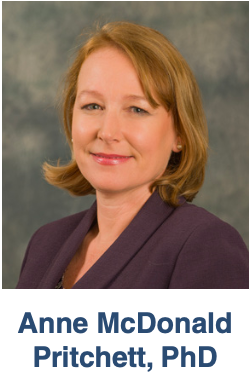
Anne McDonald Pritchett, PHD, Senior Vice President of Policy and Research, PhRMA: Speaking for the industry overall, we continue to have a huge gap in terms of STEM workers. We’re very focused on growing that pipeline, particularly as we see proposals from Congress and administration to enhance biopharmaceutical manufacturing in the US and we know we need to grow the workforce and fill new positions.
Also, how do we increase the diversity in our workforce? PhRMA recently partnered with UNCF and the Center for Healthcare Innovation to hold our first Graduate Summit where we had 600 virtual attendees. It focused on getting people excited about biomedical careers and helping them make connections to potential jobs for a more diverse workforce.
James Robinson, Chief Executive Officer, Urovant Sciences: The area of focus for ’22 is talent and the recognition that talent is global. While we’ve known it’s global, it will probably stay that way. Having the ability to be flexible, recognizing that not everyone needs to move to a corporate office to do their job, is one way of addressing the global talent needs. Then retaining that talent and giving them a reason to believe there is still great opportunity to grow with the company they are at.
In our case, we were fortunate over the last year to go from roughly 50 to 300 employees, so we are definitely successful
in sourcing talent and bringing them onboard. Now it’s about building
that culture.
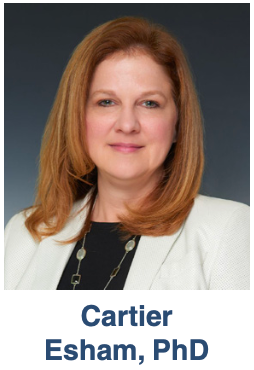
Cartier Esham, PHD, Chief Scientific Officer, BIO: BIO, in particular, has a large number of the smaller emerging biotech companies that don’t quite have a product on the market. We launched a LinkedIn group that creates a community of professionals to improve their ability to find and onboard professionals…specifically those from diverse backgrounds or maybe currently underrepresented at large across the industry.
Jack Bailey, CEO, G1 Therapeutics: On the talent side, I would add specificity, depending on what stage your company is in. Our company is also in a high-growth stage, with our first product approval earlier this year, as well as initiating six clinical trials. We are located in Research Triangle Park, N.C., which has one of the highest concentrations of PhDs, but with the aperture broadening and moving from local/regional to national/international talent, it really requires attracting folks who are inspired by your innovation. Then we, as leaders, are creating the healthiest culture possible and willing to go soup to nuts engaging the employee base even more than we did pre-pandemic.
I’m most encouraged by the very honest discussions we have with candidates about the alignment in values and expectations, which the environment is calling for—ensuring that alignment between those potential candidates and the company. And that enables us to carry out our missions that much better.
Pritchett: There also is the competitiveness issue of everyone competing for the same qualified candidates. So work flexibility and being devoted to the mission are going to be important distinguishing factors as we move forward.
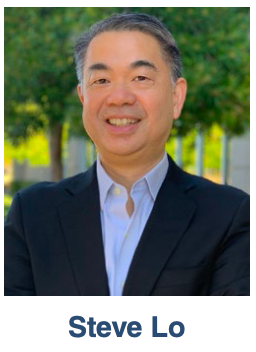
Steve Lo, President and CEO, Zosano Pharma: When we think about talent, we need to acknowledge that even our contract manufacturers have challenges with keeping staff on board. There may be rising costs in their labor, etc. We’ve been tracking that trend as well, because we all have tight timelines and having to revisit those based on labor challenges is necessary.
Hennessy:As several of you hit upon the people aspect, in a conversation I had recently with another CEO not joining us today, was the newest generation in the workforce—the Gen Zs. They are much more forthright in terms of their expectations. How are you accommodating all of the generations while not leaving some out?
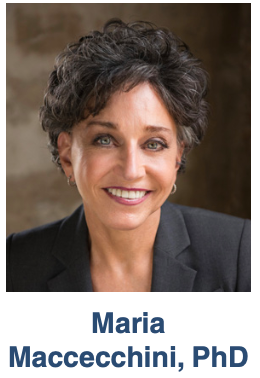
Maria Maccecchini, PHD, Founder, President, CEO AND Executive Board Member, Annovis Bio: I think that’s an excellent question because I’m probably on the older side and now our company has many more younger people. I like the fact that we get novel input; I’ve been shepherding these drugs now for 10 years, and it’s wonderful to get different input. It takes time to see a different way of looking at things, to step back and say, “Well it’s not my idea, but it’s great.” I really believe that adding young people has helped us a lot.
Lo: To Maria’s point, we’ve also tried to listen to the more tech-savvy folks who suggest interesting tools for collaboration. If we agree, we train everyone on that. That’s certainly been an area of opportunity for us to continue to find a way to balance the work flexibility and building company culture with both in-house and remote employees.
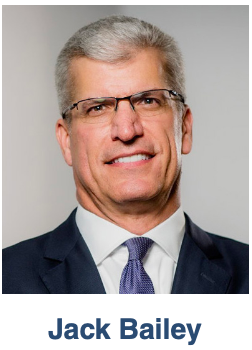
Bailey:The newer generation is different but energizing. They clearly want transparency and authenticity. Development is also high on their radar because there is a propensity for them to have many more professional chapters in their career than many of us, or at least what I had. And engaging them for their input is also a great opportunity for their growth.
Shukla: COVID also gave us an opportunity to practice a different level of corporate empathy and an opportunity to experiment. And it’s not just the “younger generation.” I’ve had more conversations with folks who’ve been at this for decades, and I use the example, even for myself, having to take care of or visit older parents.
It’s no longer work/life; it’s life/work balance. I’ve listened closely and have had more conversations to challenge employees, in a way, to say if they need to work in the UK for a month to take care of family or work from the East Coast, or whatever opportunity that works for them, it’s OK. It’s a chance to do things differently. We’ve turned the conversation upside down and it has highlighted what really is important to people.
Hennessy: Let’s take this a step further and talk about what changes COVID brought to the company or what that flexibility means to your company.
Esham: With the hybrid model, we found that it’s important to take time and think about the calendar. For example, for certain days of the week where you expect everybody to be in the office, how is that time being utilized most productively versus what might be able to happen on flex days where more Zoom calls might be more productive?
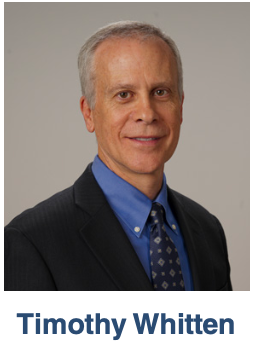
Whitten: Another issue is contingency planning. There is one plan for face to face, another plan for virtual, because at Taiho we have found that some things are more effectively done face to face than virtually. For example, having strategic discussions with our parent company in Japan has been more difficult over Teams or Zoom.
We also went through our job descriptions and identified positions which could be based remotely all the time and which positions needed to be in the office some of the time on a hybrid model. This translated into 30% of our positions being fully remote and 70% being hybrid. In July, we started having people come back two days a week and there were a lot of hugs, people missing that social connection. We will continue hybrid. There’s no perfect answer.
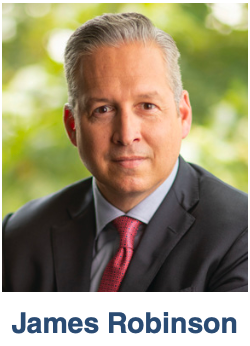
Robinson: Flexibility is the keyword that we learned over the past two years. We’ve learned that there’s the ability to leverage technology to get work done. With that being said, I still am a huge believer that human interaction is so important to building the culture. As Tim said, we reopened our office in California July 6. It was like people returning from summer break in high school seeing friends again for the first time in a year and people were just so happy to be back together. And that fosters the culture and fosters the trust that’s necessary for the long term.
Maccecchini: We started two Phase IIs exactly when the pandemic started, and we pretty much had to improvise because there were no good rules or no good understanding. And we learned to do a lot of things virtually. Auditing PIs, auditing sites, auditing everything, and some problems with supplies.
Now going into two Phase IIIs, I feel a lot more confident. We have learned how to maneuver, be much more flexible, and figure out what we do virtually and what we do in person. I agree that strategic thinking is not done very well on a computer screen. So really, my biggest issue is to recruit patients and make them feel comfortable enough, because at least one visit has to be at the hospital. The rest we can do virtually.
Hennessy: Has there been any shift in a direction for sourcing of materials, considering the global supply chain challenges?
Robinson: We were very assertive in leveraging our balance sheet to ensure that we were able to source raw materials for our API for drug substance. The lead times have extended out. There is a scarcity of certain raw materials, as well as a scarcity of equipment available.
We were very cognizant that we just couldn’t source for the next year to two years. We were thoughtful in terms of how far out we could source, and we secured supply to ensure that we had adequate drug substance for our products so that patients would have access to our medicine.
It required a lot of work, but based on that, we’ll be in very, very good shape for the next several years.
Maccecchini: Just like James, we did think early about the fact we would need novel API material; and I think we are set. It may have taken a little longer to source it, but overall we haven’t seen too much of a problem, so we are lucky.
Whitten: I would add that it’s important to have a backup. Having a sole source for an API or a sole source for your manufacturing facility probably wasn’t a good idea before, and it’s certainly not a good idea now. And having that backup in a different geography than your primary manufacturer reduces your risk.
Pritchett: BIO and PhRMA have been very focused on educating policymakers on the value of globally resilient supply chains, the negatives of having everything in one particular country for a myriad of reasons. We’ve seen a dramatic shift over the past year from government and lawmakers on how to enhance resiliency in supply chains. The fact that we didn’t see major disruptions in the supply of innovative medicines thus far during the pandemic is a testament to the value of those globally resilient supply chains.
There have been many executive orders from the administration focused on supply chain resiliency, more than $19 billion has been approved by Congress, so we need to be proactively shaping how that’s allocated.
Esham: When the Defense Protection Act went into effect for smooth manufacturing of vaccines and antivirals, we needed to make sure that wasn’t implemented in a way that unduly disrupted the supply chain for the smaller mid-sized companies that have regular standing orders.
Moving forward, we need to pay very close attention to ensure ideas around strengthening the domestic capacity here in the US through incentives or utilization of advanced manufacturing technologies is done in a way that strengthens and not harms the global supply chain.
Hennessy: How have the past 18–20 months altered the long-term strategic plan for your organizations—other than flexibility in the workplace?
Bailey: It has underscored the importance of this industry. When you look around the globe, who was able to innovate with the speed, the creativity, and ultimately the success? Hopefully, what we’ve learned during the past 18–24 months, whether it be regulatorily or development or other practices, was how do we embed those so the industry is actually healthier going forward in terms of our patient focus, faster speed, and more alignment on delivering innovation to unmet medical need. I hope it doesn’t relapse into some of the legacy positions that this industry has struggled with the past 20 years.
Pritchett:The use of digital tools has accelerated dramatically. Telemedicine is increasing access to healthcare for a lot of populations, and the regulatory flexibilities necessary due to the COVID pandemic have not resulted in any negative impacts on assessments of safety and efficacy. We are looking to embed many of those lessons learned into standard operating procedures as we engage with the FDA and others.
Esham: We have leapfrogged our learnings about how to potentially utilize a different clinical development paradigm that could lessen burdens for patients. Next year presents an opportunity, both in working with the FDA and through the legislative process to solidify those opportunities using real-world digital tools, decentralized trials, all of which will help in diversity representation and the clinical development ecosystem as a whole.
Robinson: As far as what we are doing strategically, our commercial team has done and continues to have those discussions around how we communicate with our customers and what tools we use in what instances. It’s become very, very individualized.
As a commercial organization, the access to healthcare professionals is vital. We have some accounts and some physicians that refuse to have a virtual discussion, and we have many others who are just the opposite. You really need to know your customer and spend a lot of time, strategically and tactically, figuring out the best way to communicate with them and meet them where they are. Having the ability to do that, that’s going to continue in 2022.
Lo: Life sciences and biotech are going to be a destination. Never have I seen so much innovation from technology. For example, there is so much innovation around using better artificial intelligence to design your clinical trials to be more efficient.
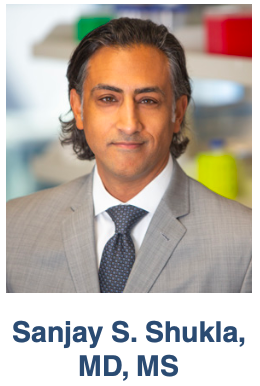
It’s safe to say that many years ago, this industry was viewed a little differently. I am very excited about our industry being a preferred destination for future business school grads, engineers, and others.
Shukla: If the pandemic did one good thing, it really focused on meaningful, impactful innovation. With COVID-19 affecting so many, and the world’s eyes watching eagerly for vaccines and treatments to help, what I hope the industry learned is the importance of innovation translating to real patient outcomes. Even in clinical development, prioritizing endpoints, for example, to those that change that patient’s life. I know that’s a difficult topic to have, but it’s something I’m hopeful we get more engaged in as a drug developer.
Lisa Henderson is Pharm Exec's Group Editorial Director. She can be reached at lhenderson@mjhlifesciences.com
View video excerpts from this roundtable on Hybrid Interactions, Supply Chain Issues, Retaining a Changed Workforce and Post-COVID Lessons Learned.
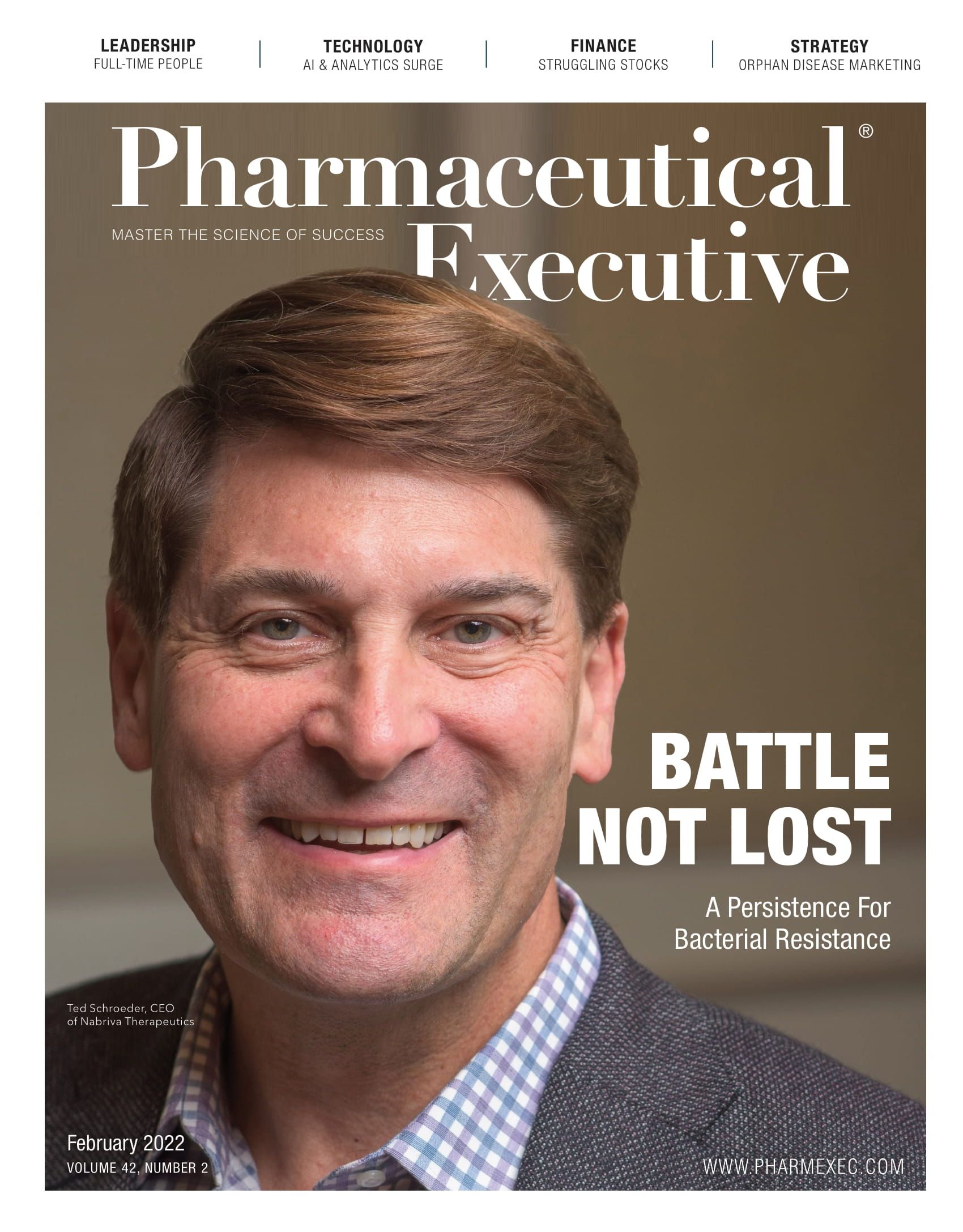
An Evolving ‘Opinion’ Landscape: New Paths—and Synergies—for Pharma KOLs & DOLs
October 13th 2023Industry experts discuss the relationship between digital and traditional (key) opinion leaders and how companies are adjusting their strategies to harness the unique brand engagement benefits each role can provide in driving better patient outcomes.